At a recent class a couple students approached me during a break because they were confused by the concept of freestyle as I had explained it during the lecture. Apparently a lot of the stages they shoot at their local matches are designed with and rely on heavy use of the 1.1.5.1 exemption from Freestyle (1.1.5) even to the extent of applying it to Long courses…which 1.1.5.1 explicitly forbids. Most of the stages they see involve boxes and the only time there is true freestyle occurs in larger contiguous shooting areas. Thus, they had come to associate freestyle with larger shooting areas and thought that shooting boxes precluded freestyle entirely.
In the process of explaining things I realized that this may be an issue that affects more than just these two gentlemen so let’s take another look at Freestyle from a bit different perspective and look at boxes versus contiguous shooting area.
We will use a simplistic course of fire as shown below. Twenty-four rounds, Comstock, of course, from three shooting areas.
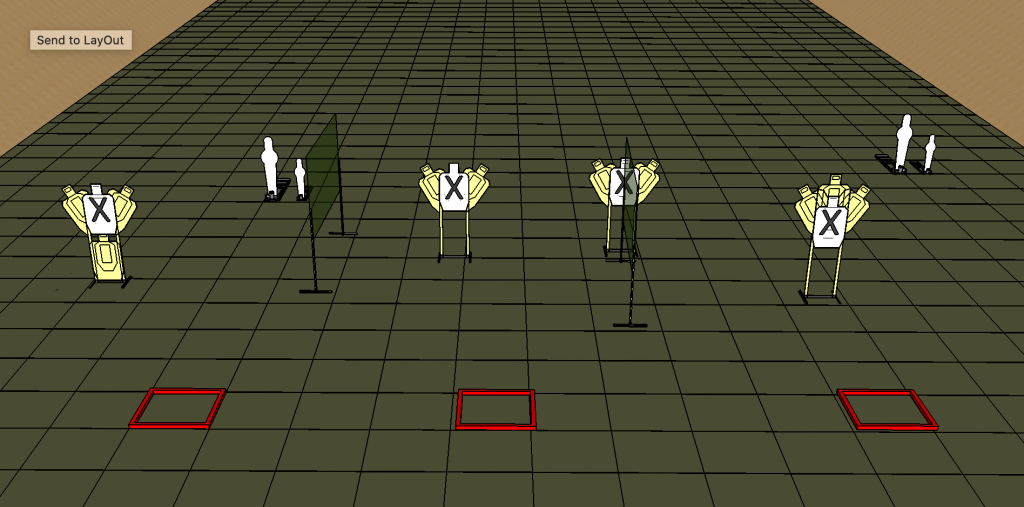
The confusion my students had was that since there are three shooting areas they equated that with a procedure that implied that you go to each shooting area and engage the array directly in front of it…which isn’t freestyle. Thus, to them freestyle was only possible with a single large shooting area. So, if we take the same stage and swap out the three shooting boxes for a large shooting area the students would interpret this as freestyle.
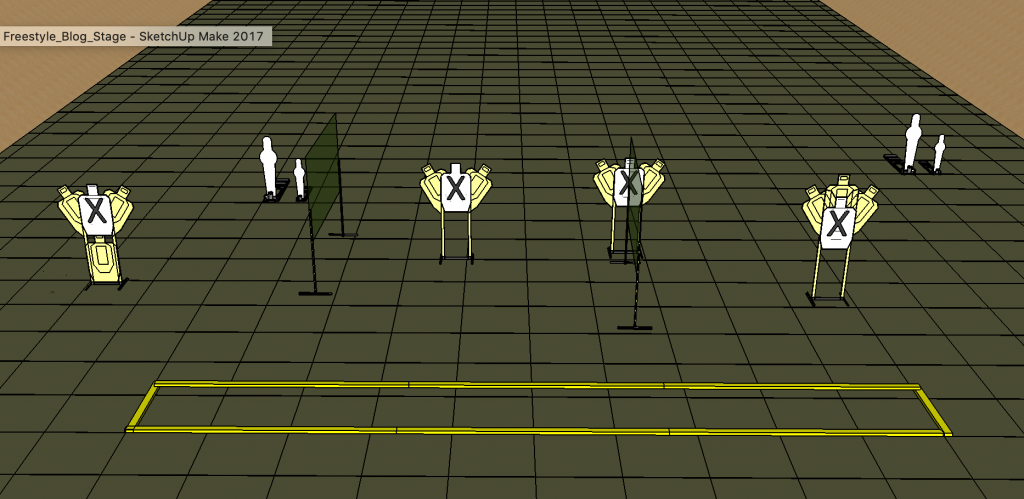
The problem here, is that they are equating what amounts to stage procedure mixed with the definition of shooting area by fault lines, as freestyle, or not freestyle. The only difference between the two stages shown is one large shooting area versus three shooting boxes.
The reality of the situation is that both stages are, for all intents and purposes, the same stage. What has differed is the stage procedure. In example 1 the stage procedure was from box A engage array A, from box B engage array B and from box C engage array C which is not freestyle. In example 2 the procedure is simply engage the targets as they are available from within the shooting area. It matters not a wit that there are three shooting areas in the first and a single shooting area in the second, at a very base level. Of course, the advantage of using three shooting boxes is easier setup. Just toss three boxes on the ground, maybe spike them down, and away we go. Fault line means more work so it happens that lazy sometimes wins, especially if set up crew is lacking.
Even using the first example with three boxes the same procedure as in example 2 can be used…”from within the shooting areas, engage targets as they are available” which then turns the stage into a freestyle stage! The reality is that targets from other arrays are available from each of the three boxes. Is it more than eight rounds from a single location? Sure, but that’s okay as long as we do not require more than eight rounds from a single location or view.
Here are views from each of the boxes.
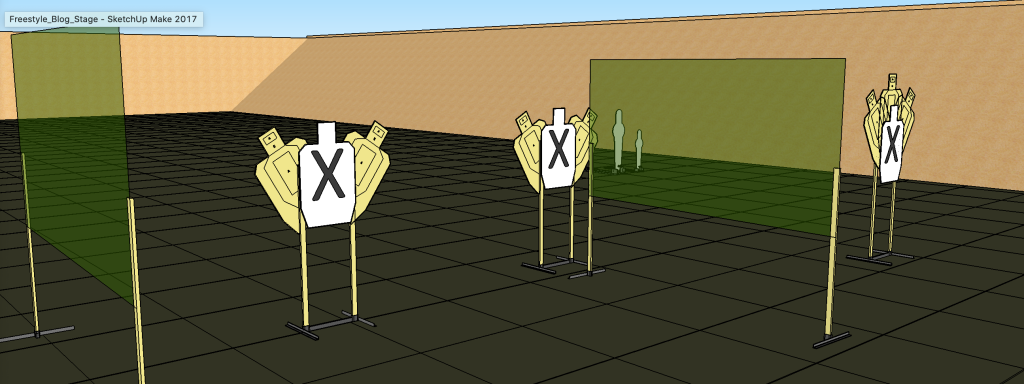
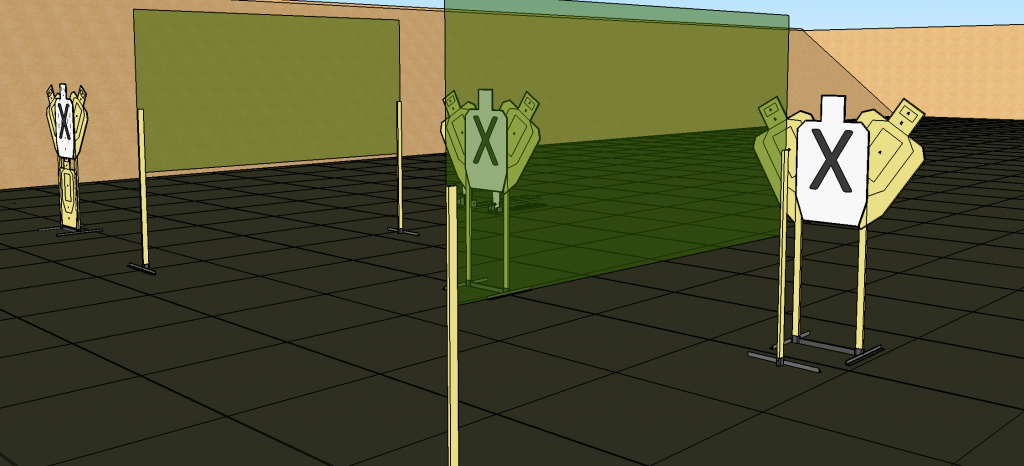
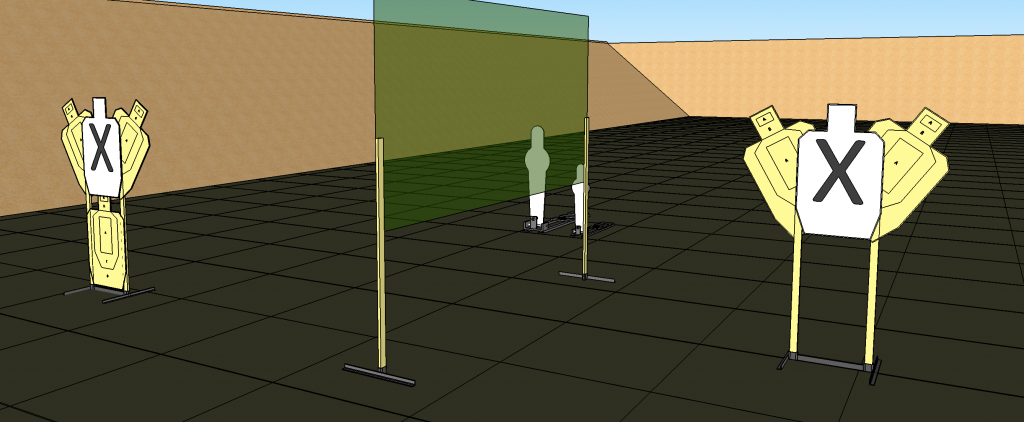

You will notice that at least two rounds are unavailable in the adjacent positions so the shooter is required to visit each of the three boxes…or in the case of one large shooting area, the shooter is required to progress along through the shooting area.
What targets to take from where, given angles, distances, etc. becomes entirely a decision for the shooter given their abilities and their division. Shooters with lower capacity (Revolver, Single Stack, L10, Production) are going to make different decisions than shooters with more rounds (Carry Optics, Limited, PCC and Open). Shooters that are comfortable shooting on the move are going to take advantage of that ability, and so on.
You can increase freestyle a bit more, that is, increasing the complexity of the shooter’s problem to solve, by declaring the starting position to be standing in a shooting area (one of the three) or anywhere in the shooting area (for the single larger shooting area). In the very simplistic situation shown, depending on where the shooter chose to start in the single larger shooting area example, they might be able to reduce the problem to two locations depending on Division and their desire to do standing reloads. Keep in mind I intentionally chose to use very simplistic examples here.
The disconnect, as stated earlier and you should now be clearly able to see, is that of procedure, even if only implied. Array A from Box A, Array B from Box B and Array C from Box C is absolutely nothing more than procedure. And that procedure is what spoils the freestyle aspect of the stage. It really doesn’t matter if there are three shooting areas or one. Freestyle can still rule the day.
This isn’t at all unusual. Quite often when we are reviewing stages submitted for approval for Level II and Level III matches we run across otherwise good stages that have restricted freestyle through the stage procedure. Luckily, those sorts of things are pretty simple to fix.
Both versions of the stage have significant freestyle possibilities. One might even consider that the three box version would be more challenging. Kind of depends on shooter ability to move and shoot on the move as well as their ability to plan their movement between boxes most efficiently. Either way, it’s the same challenge for everyone.